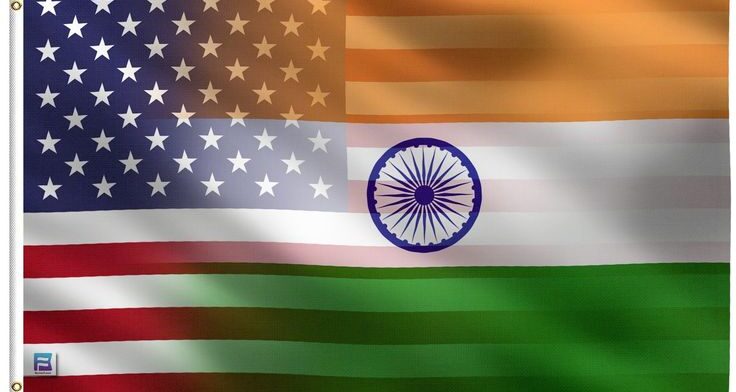Navigating the intricacies of time differences between India and the United States is essential for seamless international communication and coordination. While India adheres to a single time zone, the United States spans multiple time zones, each with unique characteristics. In this guide, we’ll explore the nuances of Indian Standard Time (IST) and the various time zones across the United States, providing insights, comparisons, and practical tips for managing global interactions effectively.
Time Difference Between India and the United States
When it comes to global connectivity, understanding time differences is essential for scheduling meetings, coordinating travel plans, or simply staying in touch with friends and family across different parts of the world. In this article, we’ll explore the time difference between India and the United States, delving into the unique characteristics of each country and how their respective time zones interact.
About India
India, a vast and diverse South Asian country, spans multiple time zones but primarily follows Indian Standard Time (IST). IST is 5 hours and 30 minutes ahead of Coordinated Universal Time (UTC+5:30). This time zone encompasses the entire country, from the bustling metropolises of Mumbai and Delhi to the serene landscapes of Kerala and Himachal Pradesh.
India is known for its rich cultural heritage, ancient traditions, and vibrant festivals celebrated throughout the year. From Diwali, the festival of lights, to Holi, the festival of colors, each event brings communities together in joyous celebration.
About the United States
The United States, often called the land of opportunity, is a vast nation spanning multiple time zones across North America. The contiguous United States (excluding Alaska and Hawaii) observes four primary time zones:
- Eastern Standard Time (EST): UTC−5:00
- Central Standard Time (CST): UTC−6:00
- Mountain Standard Time (MST): UTC−7:00
- Pacific Standard Time (PST): UTC−8:00
In addition to these time zones, Alaska follows Alaska Standard Time (AKST) and Hawaii follows Hawaii-Aleutian Standard Time (HAST), each with its offset from UTC.
The United States is renowned for its diverse landscapes, bustling cities, and cultural melting pot. From the iconic skylines of New York City and Chicago to the stunning natural beauty of the Grand Canyon and Yellowstone National Park, there’s something for everyone to explore.
Time Difference Between Different Time Zones of US and India
In India, the nation adheres to a singular time zone known as Indian Standard Time (IST), often abbreviated as IST. This standardized time zone spans the entirety of the country, providing consistency in timekeeping from the bustling streets of Delhi to the tranquil shores of Kerala. Meanwhile, the United States boasts a more intricate temporal structure, with six officially recognized time zones. These include the Hawaii Standard Time Zone, Hawaii-Aleutian Daylight Time Zone, Alaska Daylight Time Zone, Pacific Daylight Time Zone, Mountain Standard Time Zone, and Mountain Daylight Time Zone. Each of these time zones delineates specific regions across the vast expanse of the United States, embodying the nation’s geographical diversity and contributing to its multifaceted temporal identity.
Time Difference Between Hawaii Standard Time Zone and India
Hawaii Standard Time (HST) is observed in the Hawaiian Islands and is 15 hours behind Indian Standard Time (IST). For example, if it’s noon in Hawaii, it would be 3:00 AM the following day in India.
Time Difference Between Hawaii-Aleutian Daylight Time Zone and India
During daylight saving time, the Hawaiian Islands observe Hawaii-Aleutian Daylight Time (HDT), which is also 15 hours behind Indian Standard Time (IST). When it’s noon in Hawaii during daylight saving time, it’s still 3:00 AM the following day in India.
Time Difference Between the Alaska Daylight Time Zone and India
Alaska Daylight Time (AKDT) is used in the state of Alaska and is 13 hours and 30 minutes behind Indian Standard Time (IST). For instance, if it’s noon in Alaska, it would be 1:30 AM the following day in India.
Time Difference Between the Pacific Daylight Time Zone and India
Pacific Daylight Time (PDT) is observed in the western states of the contiguous United States, including California, Oregon, and Washington. PDT is 12 hours and 30 minutes behind Indian Standard Time (IST). For example, if it’s noon in California, it would be 12:30 AM the following day in India.
Time Difference Between Mountain Standard Time Zone and India
Mountain Standard Time (MST) is followed in states such as Arizona, Colorado, and Utah and is 11 hours and 30 minutes behind Indian Standard Time (IST). If it’s noon in Colorado, it would be 12:30 AM the following day in India.
Time Difference Between Mountain Daylight Time Zone and India
During daylight saving time, these states observe Mountain Daylight Time (MDT), which is also 11 hours and 30 minutes behind Indian Standard Time (IST). When it’s noon in Colorado during daylight saving time, it’s still 12:30 AM the following day in India.
Understanding these time differences is essential for coordinating international communications and scheduling activities between Hawaii, Alaska, the Pacific coast, the Mountain states, and India.
Wrap Up:
In conclusion, understanding the time difference between India and the United States entails grasping the intricacies of their respective temporal landscapes. While India adheres to a single time zone, Indian Standard Time (IST), the United States boasts six distinct time zones, each delineating specific regions across the country. From the tranquil shores of Hawaii to the rugged landscapes of Alaska and the bustling cities of the Pacific and Mountain states, these time zones shape the rhythm of life for millions of people. Navigating the time disparities between these two nations is essential for effective communication, scheduling, and coordination across borders. By recognizing and respecting these differences, individuals and organizations can bridge temporal gaps and foster seamless interactions between India and the United States.
FAQs:
1. Why does India have only one time zone while the United States has six?
Answer: India operates on a single time zone, Indian Standard Time (IST), to maintain uniformity across the country. This simplifies administration, communication, and scheduling within the nation. In contrast, the United States spans a vast geographical area with diverse landscapes and populations, necessitating the adoption of multiple time zones to accommodate regional variations in daylight hours and optimize efficiency.
2. How does daylight saving time affect the time difference between India and the United States?
Answer: Daylight saving time (DST) is observed in several states within the United States, shifting their time zones forward by one hour during the warmer months. This can temporarily alter the time difference between India and affected U.S. states. It’s essential to account for these changes when scheduling meetings or coordinating activities across international borders.
3. Are there any exceptions to the time zones in the United States?
Answer: Yes, there are exceptions. For instance, Arizona does not observe daylight saving time and remains on Mountain Standard Time (MST) throughout the year. Additionally, some states may have regions that adhere to different time zones due to geographical or administrative reasons. It’s advisable to verify the current time zone observances when planning activities within the United States.
4. How can individuals and businesses effectively manage communication and scheduling across the time difference between India and the United States?
Answer: To effectively manage communication and scheduling across the time difference, individuals and businesses can utilize various tools and strategies. These may include:
- Implementing shared calendars or scheduling software to coordinate meetings across different time zones.
- Utilizing time zone converters or world clock applications to quickly determine suitable meeting times.
- Establishing clear communication protocols regarding availability and preferred communication channels.
- Being flexible and accommodating when scheduling meetings to accommodate participants from different time zones.
- How Does Automated Scheduling Save Time and Boost Engagement? - April 16, 2025
- 21 Delicious High Protein Foods - May 31, 2024
- Black Seed Oil: Health and Beauty Benefits - May 30, 2024




